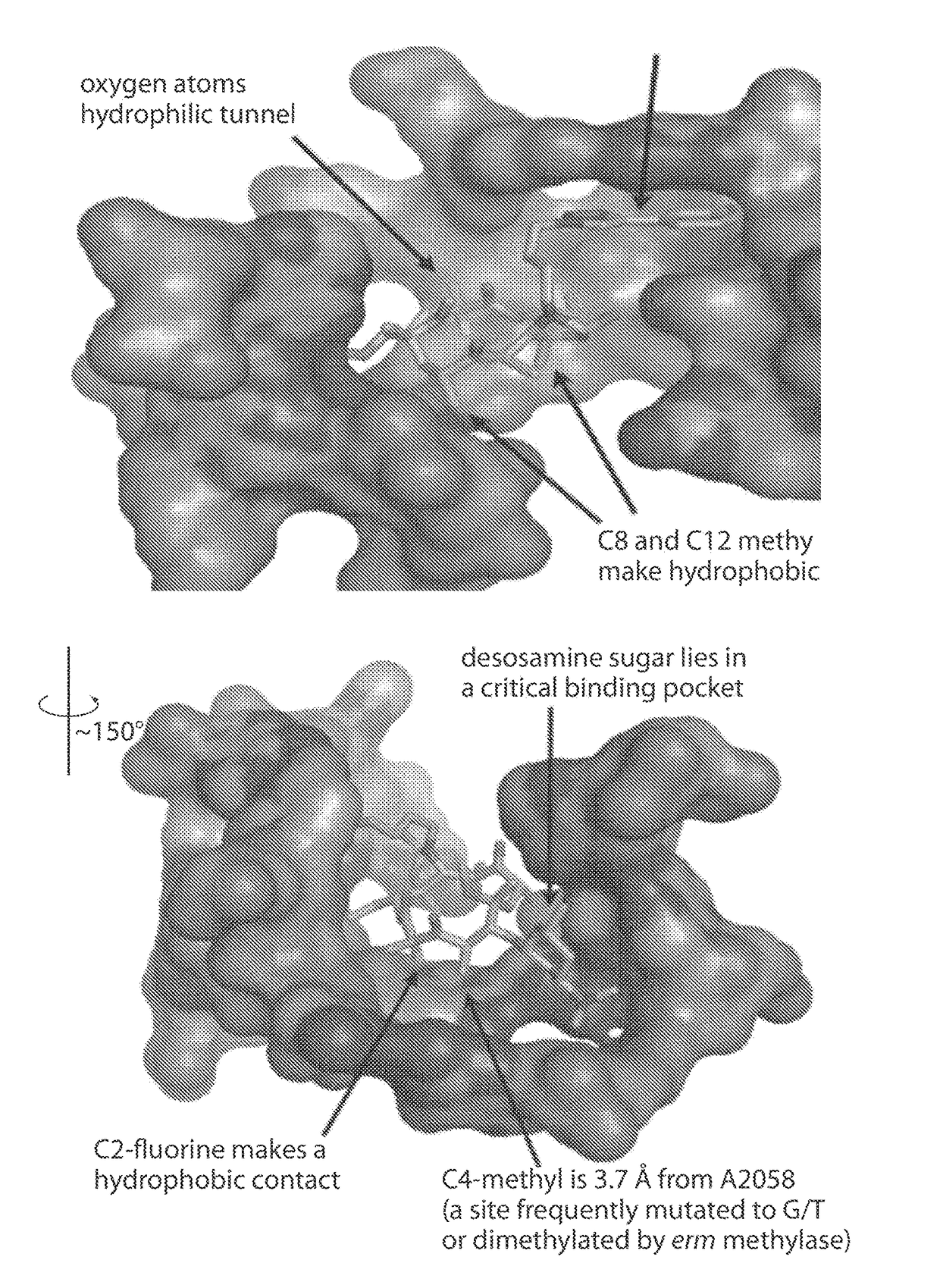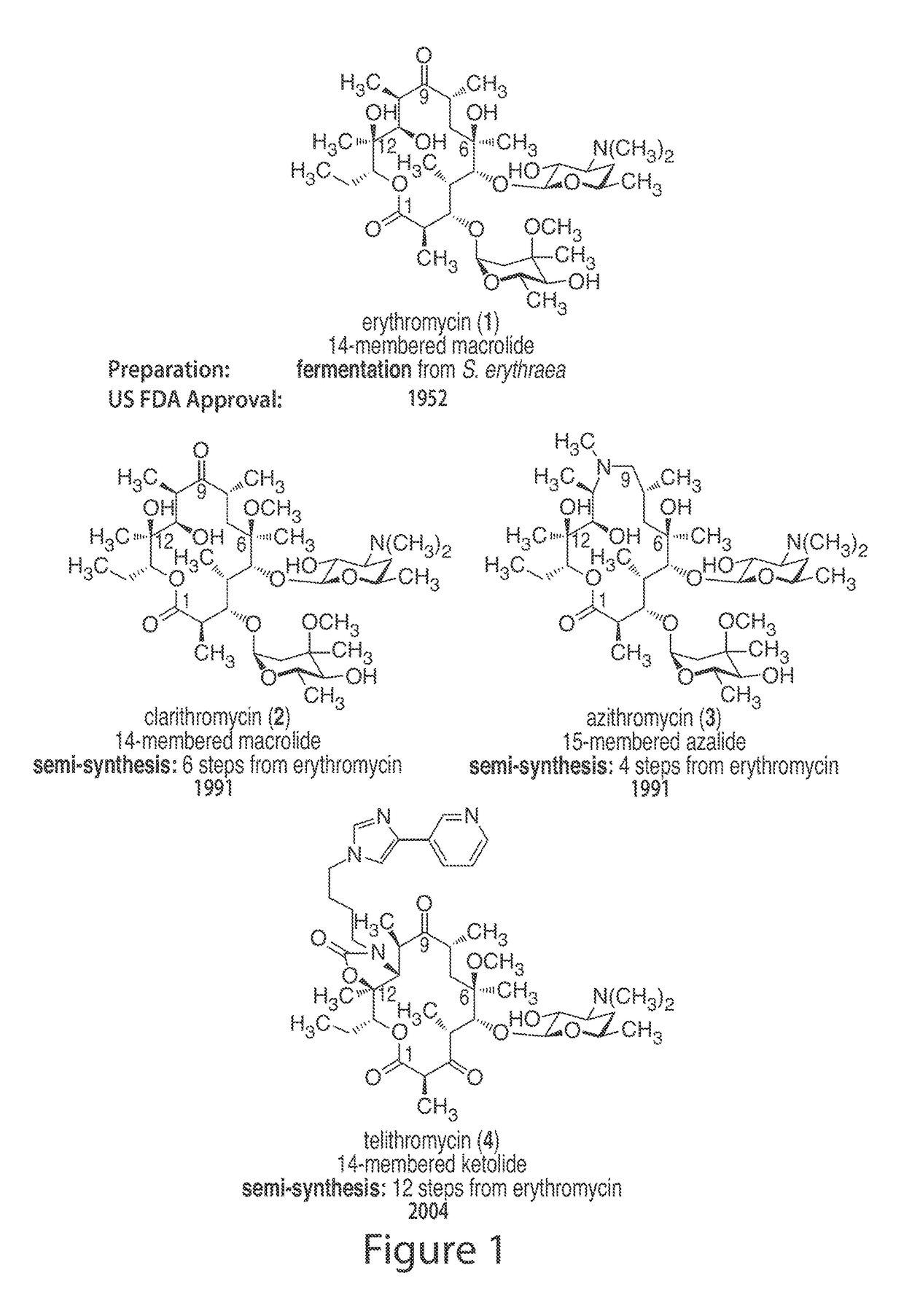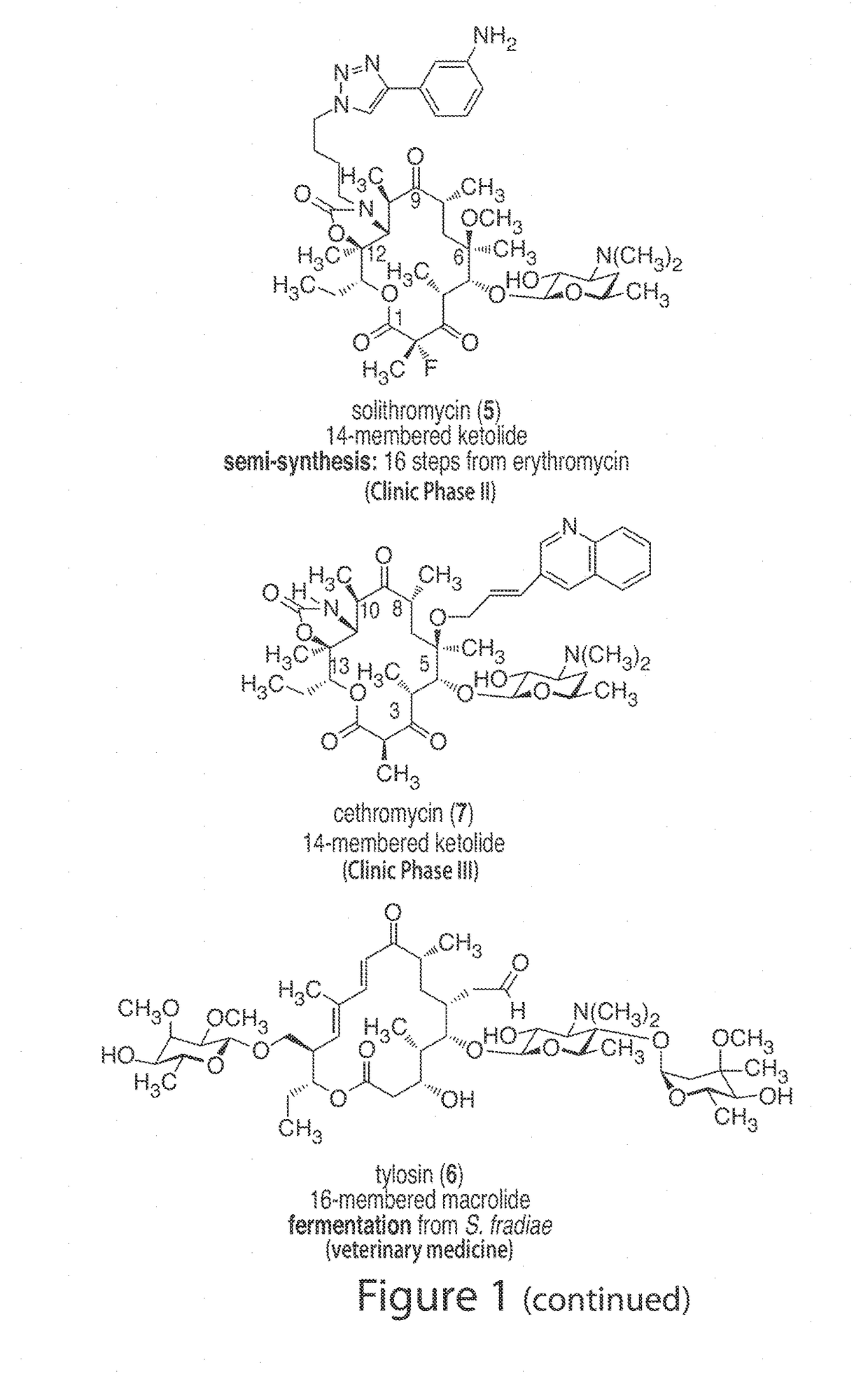Macrolides with modified desosamine sugars and uses thereof
a technology of desosamine sugar and macrolides, which is applied in the field of macrolides with modified desosamine sugars, can solve the problems of insufficient treatment of antibiotics, increased drug resistance, and increased drug resistance, so as to improve drug resistance, improve drug safety, and reduce side effects.
- Summary
- Abstract
- Description
- Claims
- Application Information
AI Technical Summary
Benefits of technology
Problems solved by technology
Method used
Image
Examples
examples
[0493]In order that the invention described herein may be more fully understood, the following examples are set forth. The synthetic and biological examples described in this application are offered to illustrate the compounds, pharmaceutical compositions, and methods provided herein and are not to be construed in any way as limiting their scope.
Macrolide Binding and Resistance
[0494]The macrolide antibiotics, as exemplified by the macrolides depicted in FIG. 1, inhibit peptide synthesis by hindering transit of the nascent peptide through the exit tunnel in the bacterial ribosome. All 13- to 16-membered macrolide antibiotics bind with almost identical macrolactone (or azalactone) conformations in which a hydrophobic face of the molecule (comprising several methyl groups and one ethyl group) is engaged with the wall of the peptidyl exit tunnel and a hydrophilic face of the molecule (comprising four C—O and C═O groups) is exposed to the hydrophobic interior of the tunnel (FIG. 2, 12 Å ...
PUM
 Login to View More
Login to View More Abstract
Description
Claims
Application Information
 Login to View More
Login to View More - R&D
- Intellectual Property
- Life Sciences
- Materials
- Tech Scout
- Unparalleled Data Quality
- Higher Quality Content
- 60% Fewer Hallucinations
Browse by: Latest US Patents, China's latest patents, Technical Efficacy Thesaurus, Application Domain, Technology Topic, Popular Technical Reports.
© 2025 PatSnap. All rights reserved.Legal|Privacy policy|Modern Slavery Act Transparency Statement|Sitemap|About US| Contact US: help@patsnap.com



